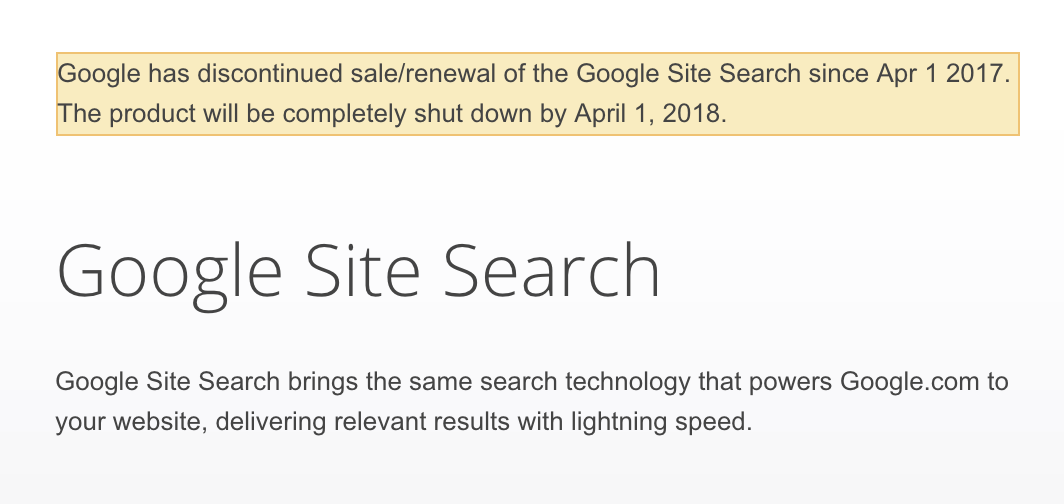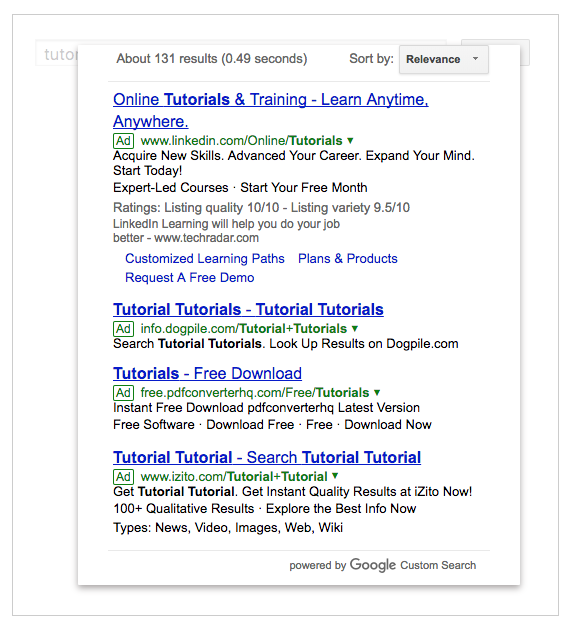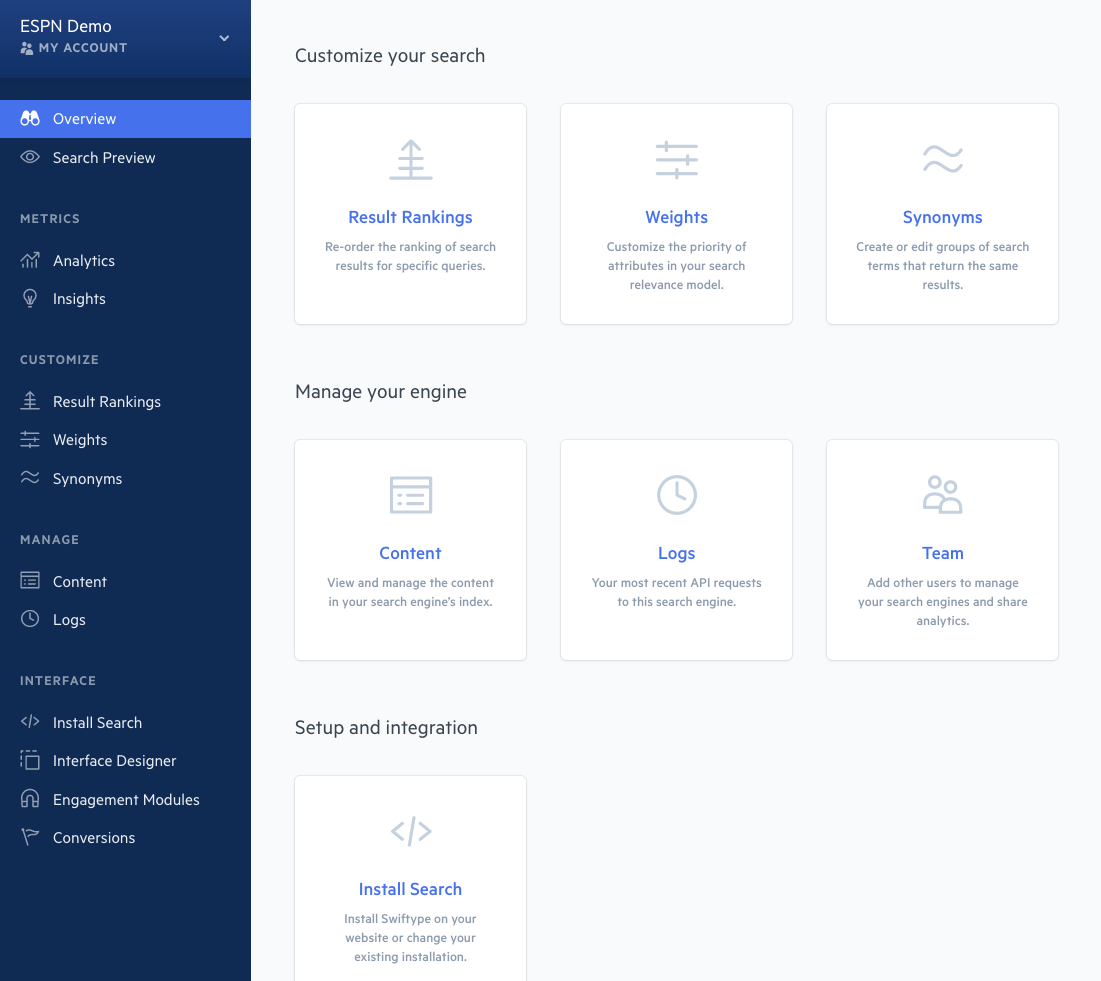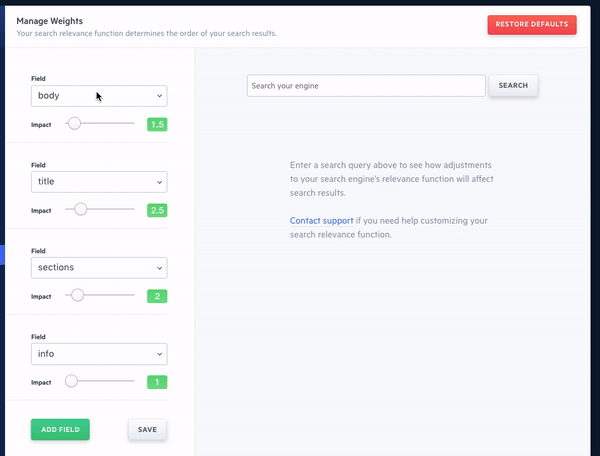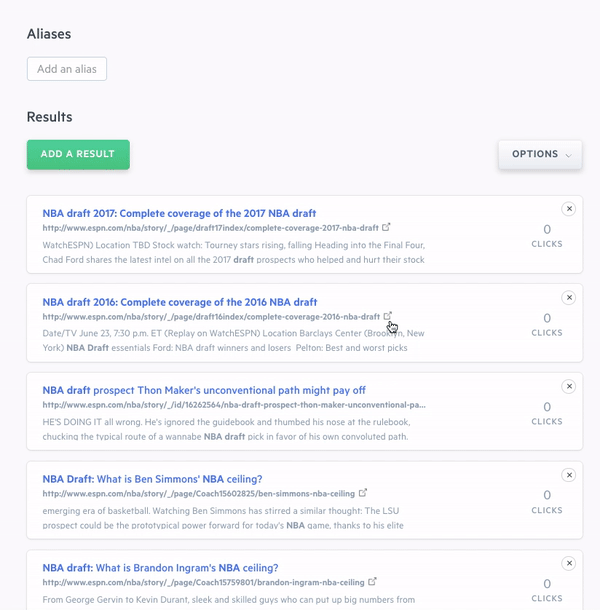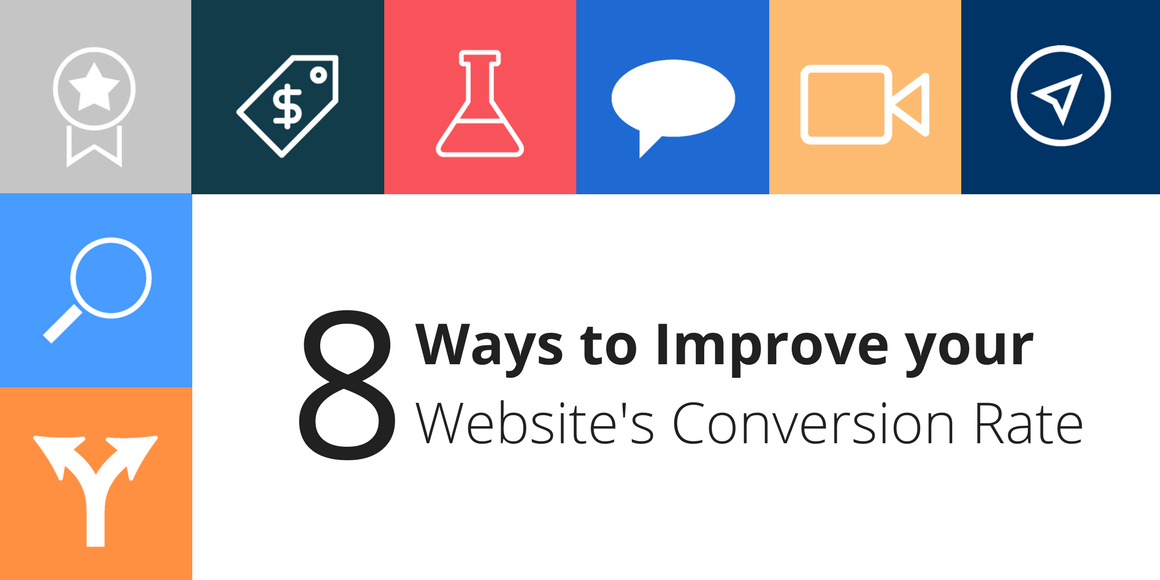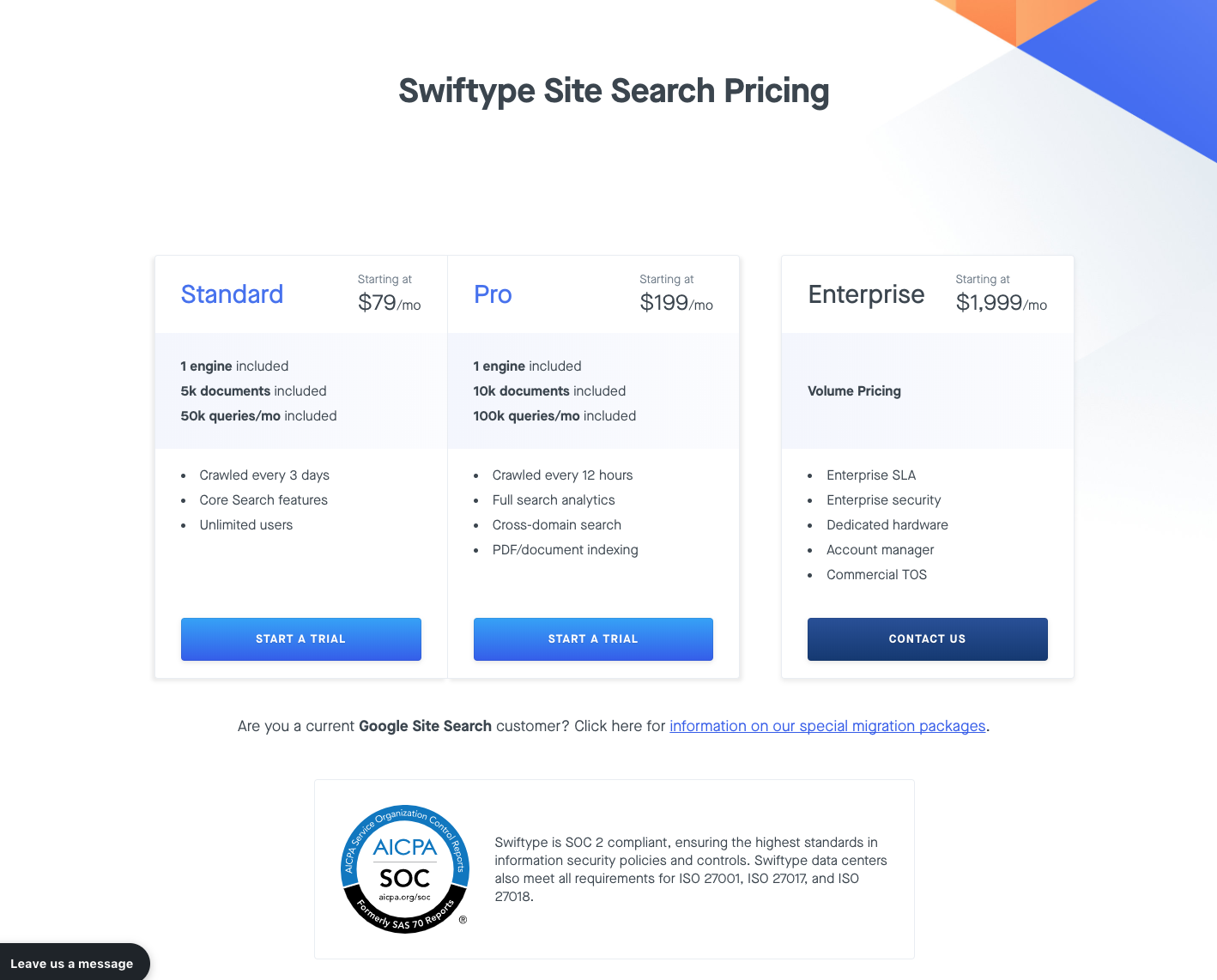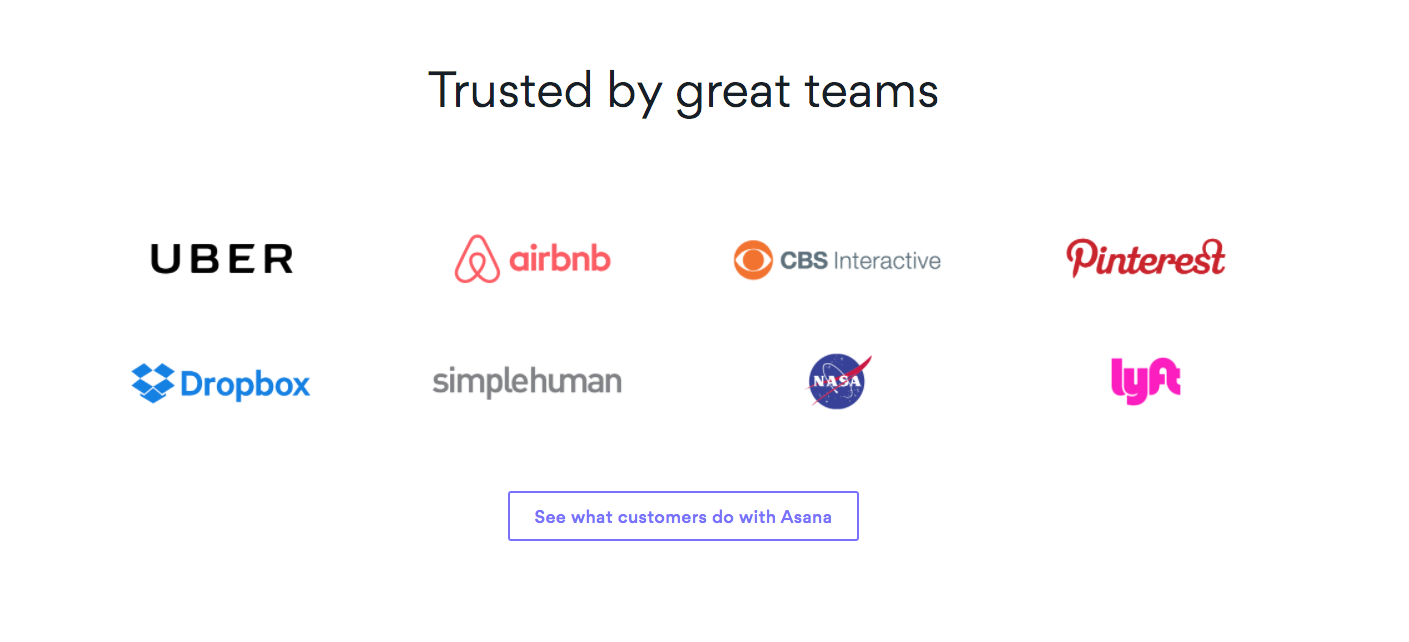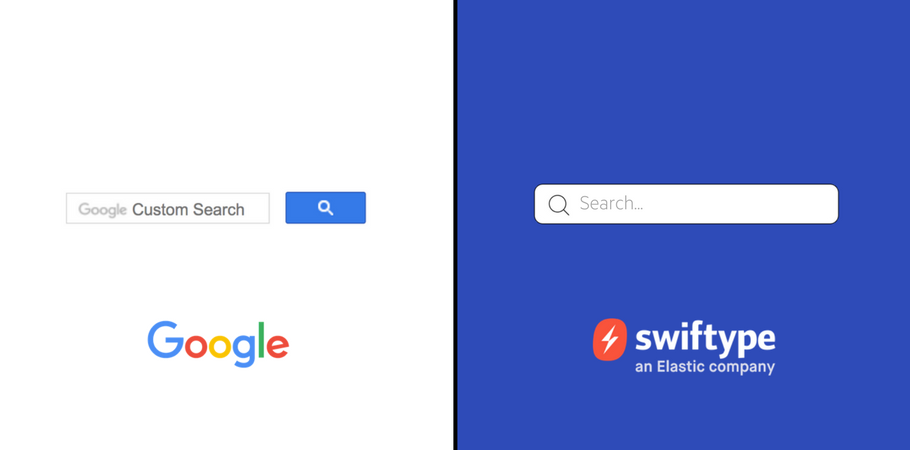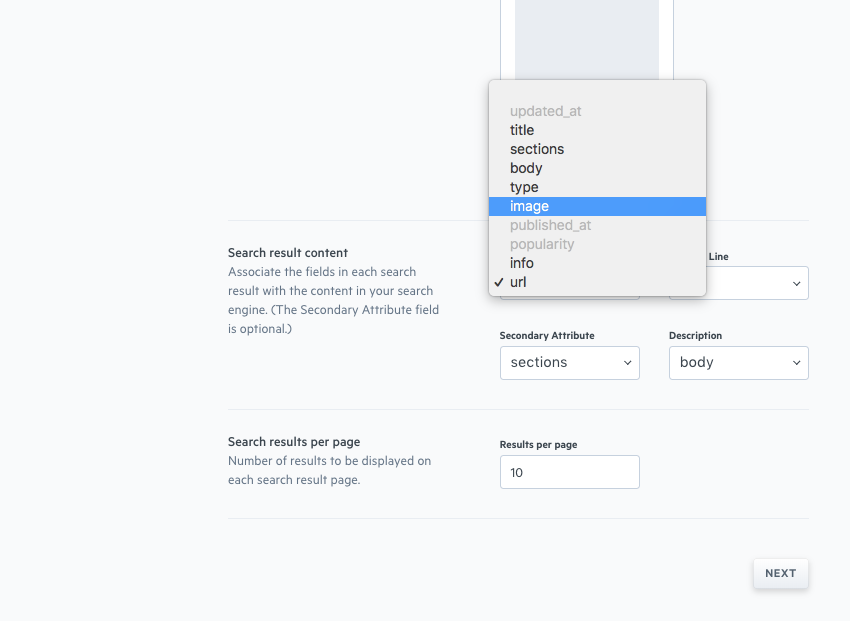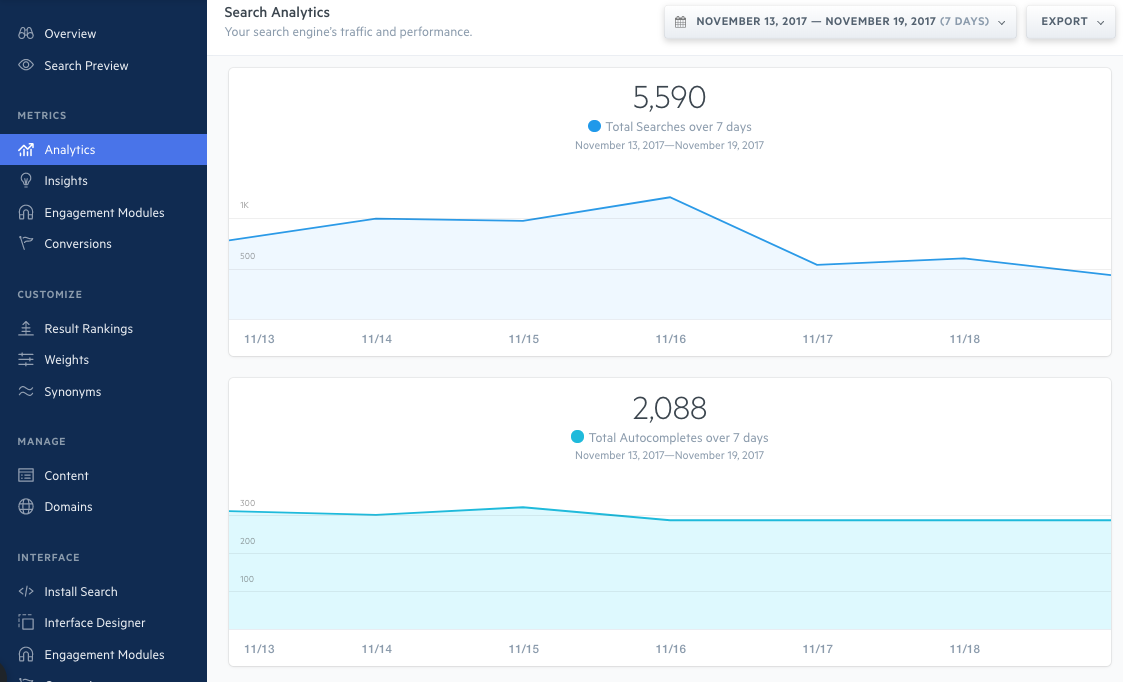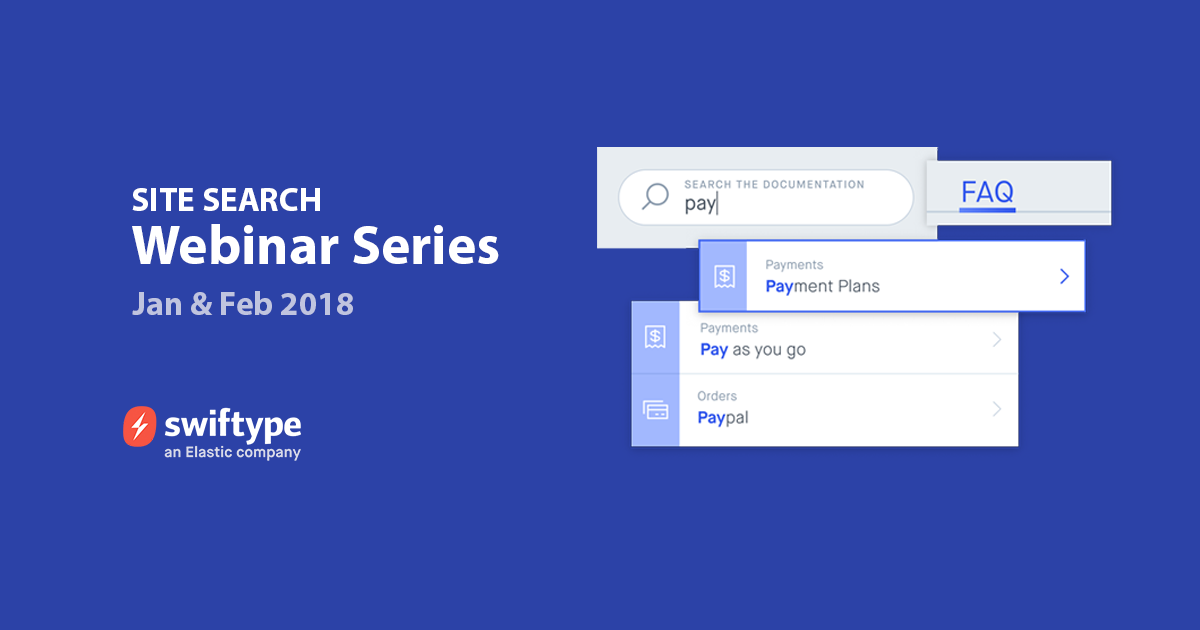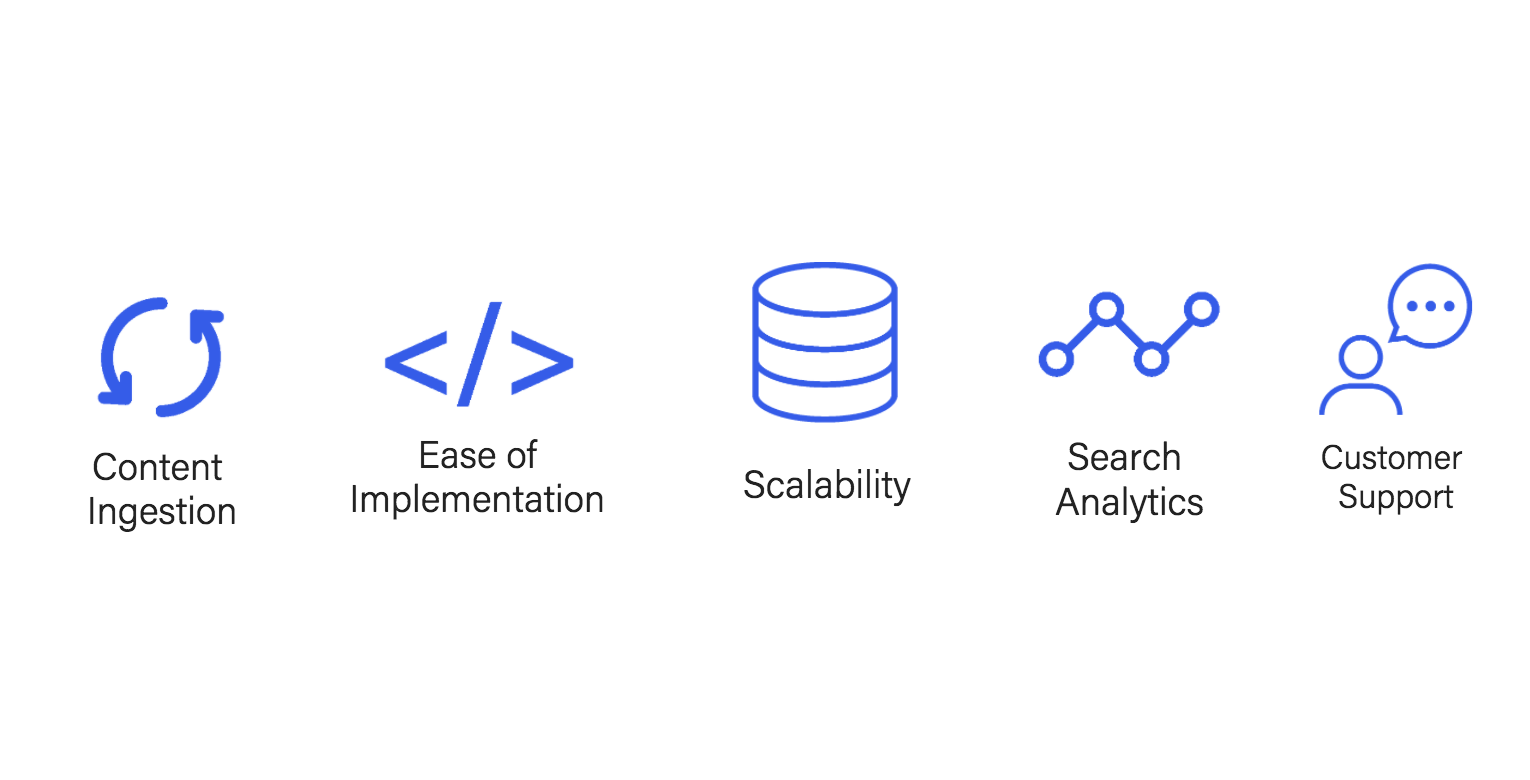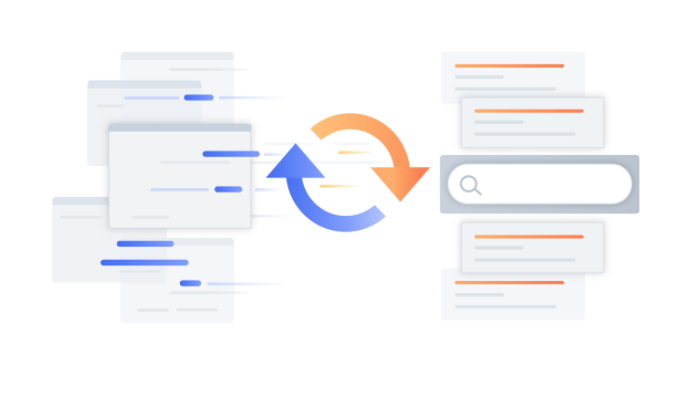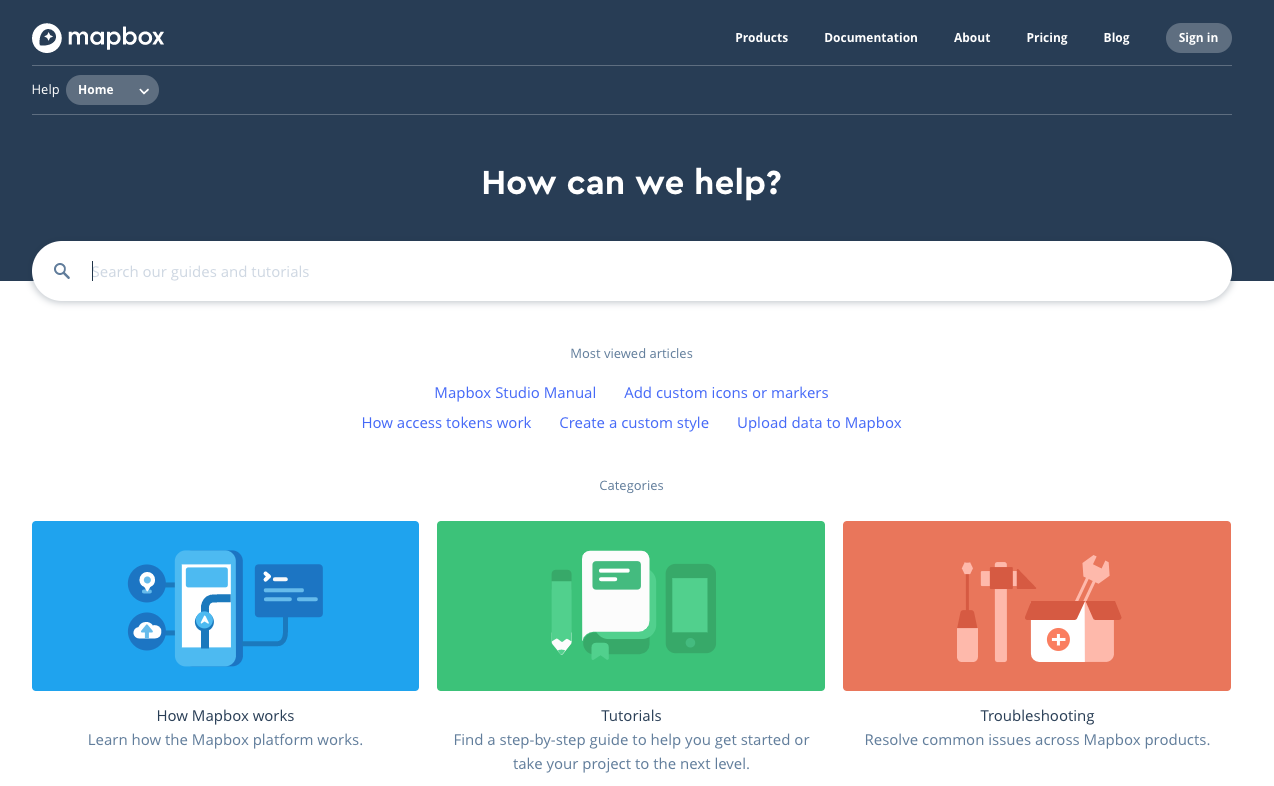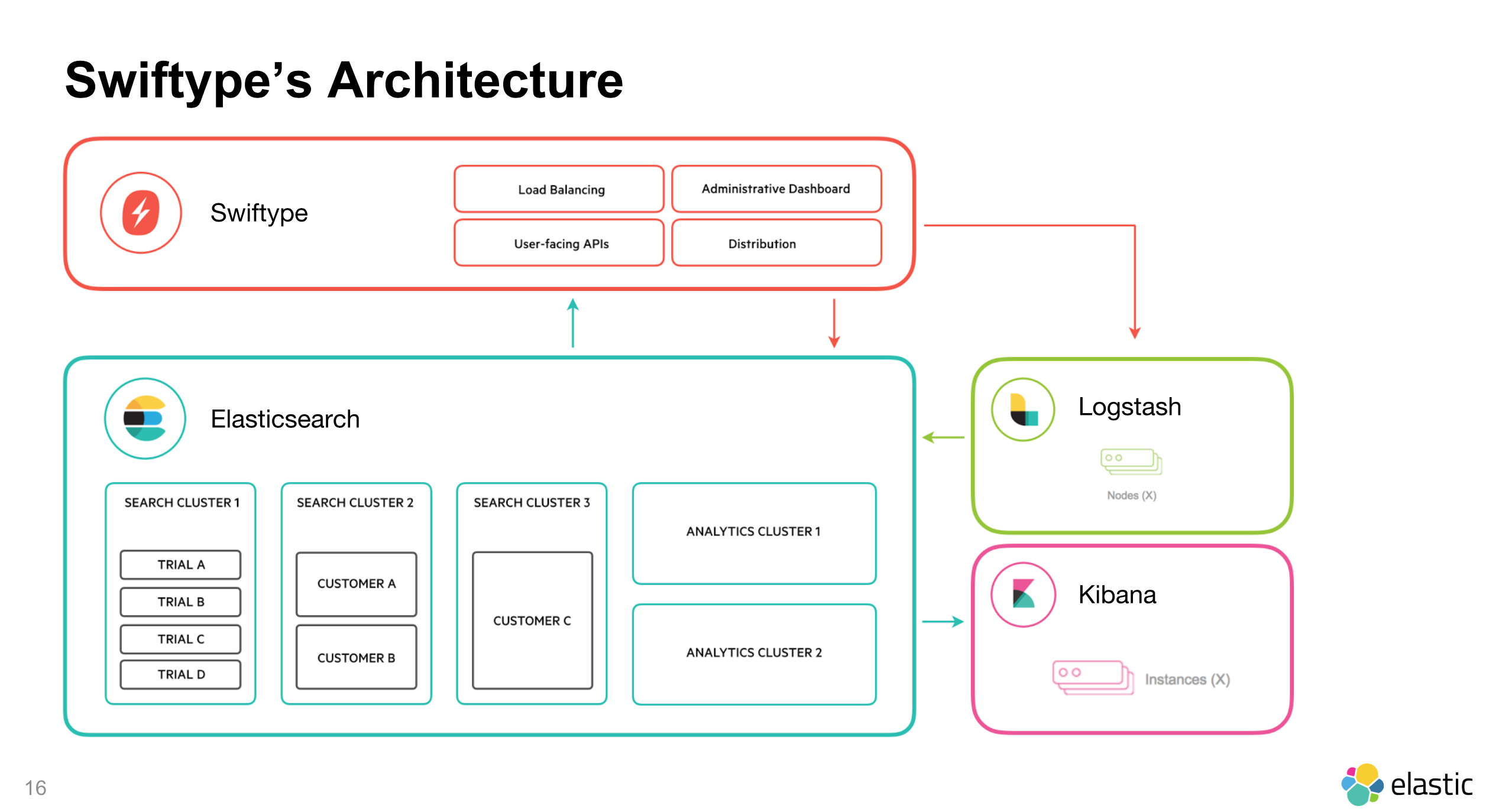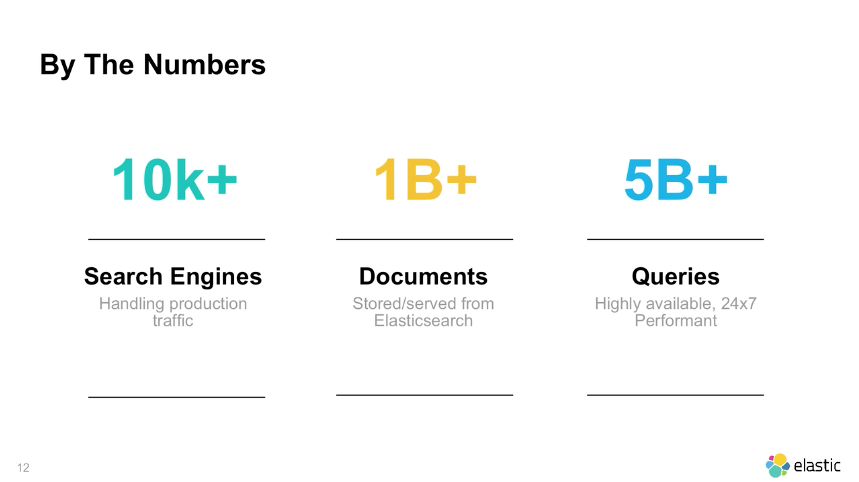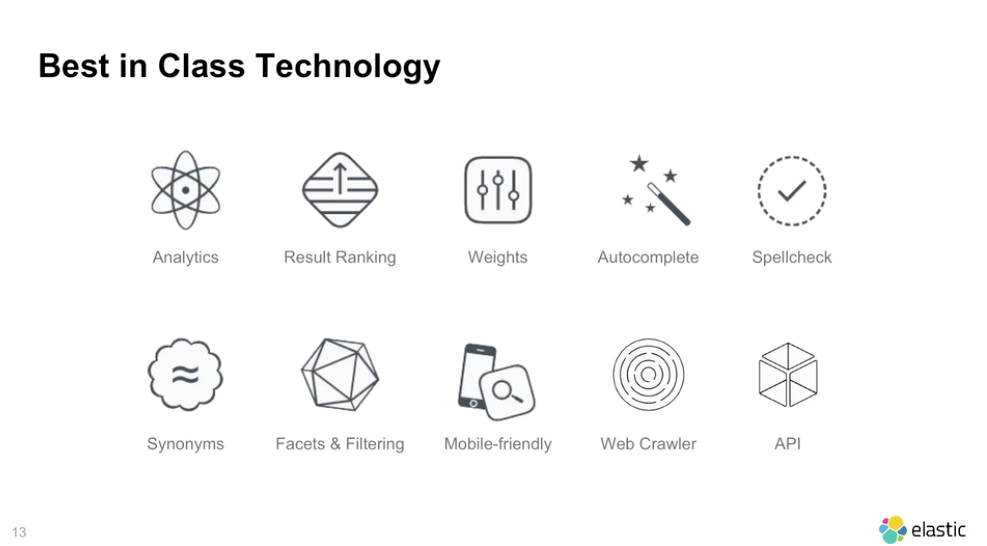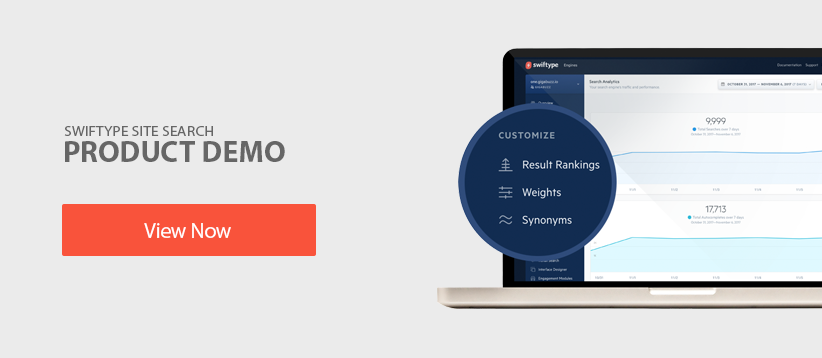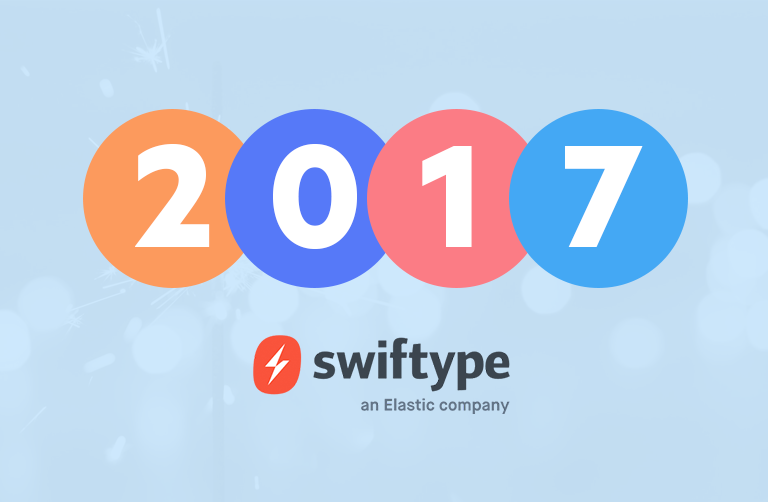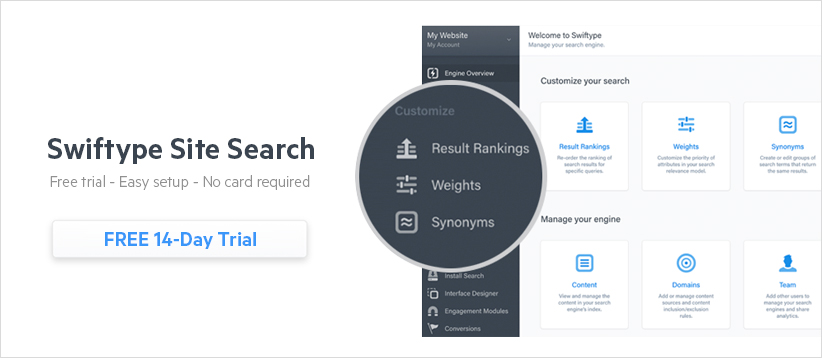
Swiftype was recently invited by leading marketing resource MarketingProfs to write a post highlighting the three questions organizations should ask themselves as they look to replace Google Site Search (commonly referred to as GSS). As you likely know, April 1 was the official sunset of GSS and now users are given alternative migration options such as CSE (Google Custom Search Engine) — which will be a pared down version of GSS that features ads.
Kyle Bento of IMPACT provided a great breakdown of GSS alternatives and included this information on what you can expect from CSE.
Google Custom Search seems is very similar to GSS minus a few key features:
- Google Custom Search is Ad-based. That means that you’ll be at the mercy of your competitor’s paid advertising, but embedded right on your site. (There’s one exception: Non-profits.)
- There’s no option to disable Google’s branding. One of the most appealing features of GSS was the ability to remove Google’s branding and seamlessly merge results into your site. Not anymore.
- Query limits are capped daily. That means if you’re operating a high-volume website, Google Custom Search will stop working once you’ve hit your quota.
- No more email support. If you have a problem, you’re on your own.
In our article, Swiftype co-founder Matt Riley identified the three questions every org needs to consider as they choose their alternative. As Bento puts it, CSE “is not an ideal solution for professionals.” For those of you looking for a more robust solution, check out Matt’s article here (or hop on over to MarketingProfs and take a read).
And if you’re a GSS customer and you’re ready to get started with Swiftype, you can fill out this form, and we will be in touch shortly. Alternatively, you can watch our recent webinar and learn how to migrate to Swiftype in four simple steps.
Google Site Search Is Going Has Gone Away: Three Questions to Ask Before You Replace It
Google launched Google Site Search (GSS) in 2008 to offer its technology to online publishers and their websites for searchers to use while on those sites, but the company recently announced that it will sunset GSS, forcing companies to replace its search technology by April 1, 2018.
If you are facing that decision, ask yourself three questions we’ve compiled to help you find a GSS replacement.
1) Do I need a more robust solution?
Website visitors who perform a site search are 216% more likely to convert than visitors who don’t, so it is important to ensure that those users have good experiences throughout their visit.
Furthermore, a search on your website is a strong sign of user intent, and you should be paying close attention to what the searcher is trying to find. What GSS lacks—and many alternatives offer—are customization abilities and powerful site search data and analytics, both of which provide useful ways to give marketing programs a shot of adrenaline.
Why does it matter?
Most brands that want to use content beyond purely informational purposes tend to look for some level of customization, prioritizing content based on relevancy, time, and other factors. User behavioral data is also of huge importance — especially as it relates to search — because it sheds light on what consumers want to know, what they are and aren’t finding useful, or even helping to identify customer service problem areas. Brands like SurveyMonkey have leveraged search data to build better help center content. Deanna Horton, Senior Content Strategist for SurveyMonkey, told Forbes recently, “Listening to customers is core to who we are as a company. To make impactful data-driven improvements to self-service content, we listen to our customers by determining what they’re writing to support about and using our findings to inform new content that answers those questions. At the end of the day, you can’t answer someone’s question if you don’t know what their question is.”
According to Horton, “[SurveyMonkey’s] product teams also leverage the data to continually improve the product experience.”
2) Will we actually use it?
New solutions are often implemented with the best of intentions but ultimately don’t get a lot of use. We’ve all done it. We’d all like to never do it again. Given website activity and content are usually highly important, brands can’t afford to let this happen with their site search technology. Be especially aware of the technical requirements a tool requires and how they match with your team’s capabilities to ensure on-going use and effective management. The pressure is on to find the right solution, use it to its full capabilities, and set the brand up to benefit from all the bells and whistles.
GSS was admittedly easy to use — and that may be suitable for some businesses — but I’m willing to bet most brands are in need of something not only more robust but also easy to use. Alternative solutions offer easy customization and powerful analytics — with some vendors sending weekly data analytics reports that highlight problem areas or notable search trends. When deployed correctly, content management and site search can become very powerful tools for a brand to improve customer experience, content marketing, and brand loyalty.
Why does it matter?
Looking at site content with a critical operational eye ensures improved integration. Doing so will give you a sense of exactly where the solution fits, who will manage it, and clearly mark expectations.
An added bonus: smart marketing teams will also take the opportunity to figure out how the new solution helps them work smarter and faster. With the right solution — specifically for content management and search tools — brands can build in the right data program from the start; positioning themselves for better use of the tool, improved understanding of the good, the bad and the ugly parts of their website experience, and assessing content value as it relates to other critical web metrics (click through and bounce rates, duration times, page views, etc.).
3) How will I know it’s working?
New solutions should be judged against their effectiveness and impact on marketing goals. By finding out what metrics can be tied back directly to the new technology, marketing campaigns will be better designed to succeed. During on-boarding, actively work with your solution provider to customize a strategy for success and be clear on what metrics matter to the organization, and ask what additional metrics can be tracked. E.g. will your conversion rates be higher? Will it accelerate pipeline? Will it save your team time spent on manual work? Will it help your team organize their day and be more productive? Will it create more engagement with customers and prospects?
Why does it matter?
If you’re going to spend the money and time building/buying and implementing a new solution, you need to know what constitutes success. MapBox, a location data platform used by mobile and app developers, and used by the likes of Doordash, Mapquest, Airbnb and Snapchat, used site search technology and data to improve online experiences.
Rafa Gutierrez, Lead Support Engineer at MapBox said, “We want to ensure a streamlined and tailored experience that gives users fast access to relevant documentation so they can make the most of their use of MapBox technology. We dive into our metrics dashboard regularly to look for oddities or patterns that give us insight to how customers are finding the info they need.”
As investment into content creation and digital marketing continue to rise, make your content not only accessible but also reconcile content with marketing’s evolving focus areas. Doing so can generate huge gains towards big-picture marketing and brand goals.
As brands transition from Google Site Search, asking these three questions may guide the decision-making process. You may confirm that you have the right solution, or be compelled to explore your options. Your goal should be to deploy a solution that allows you to inform your audiences, improve the online experience, and engage in meaningful ways.
At your service: Swiftype GSS Migration Specialists
Our GSS Migration Specialists have lots of experience with the GSS migration process (which is really simple) and we make it easy for you to get a search engine up and running by providing a web crawler and API for ingesting data, and an intuitive admin dashboard for managing your search experience.
If you have questions about migrating from GSS to Swiftype or just about site search implementations in general, feel free to email us at [email protected].
